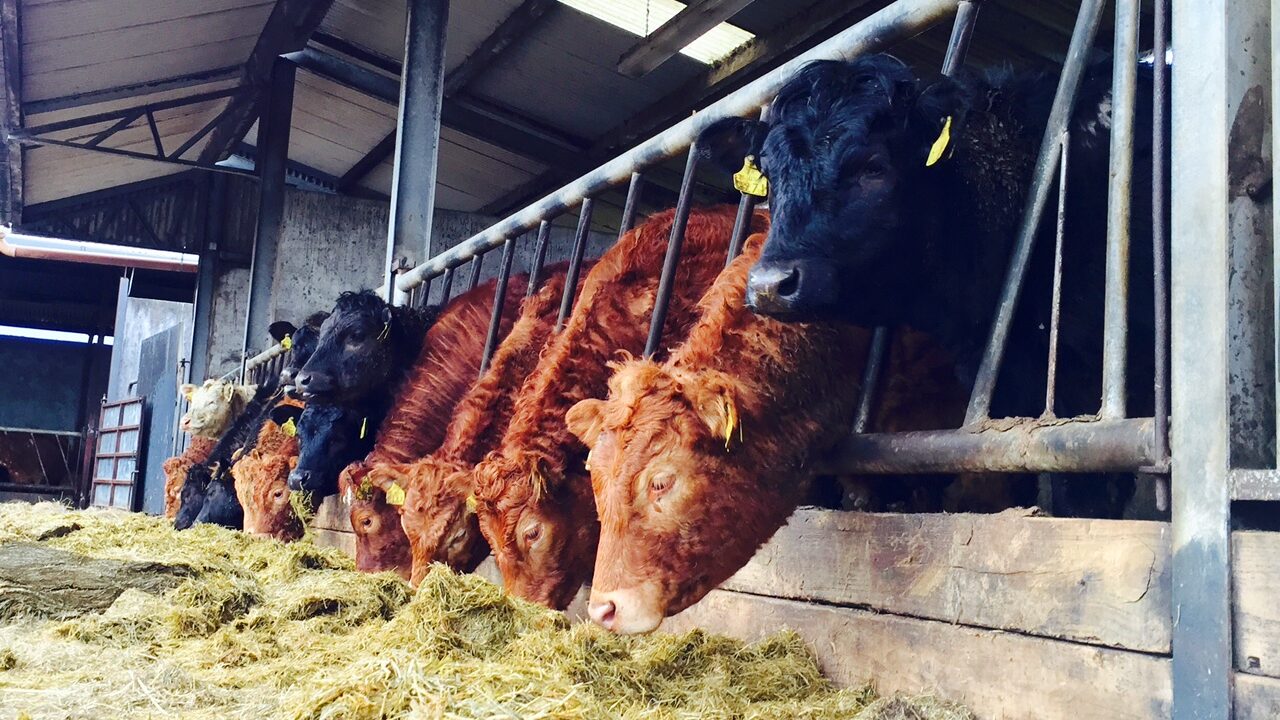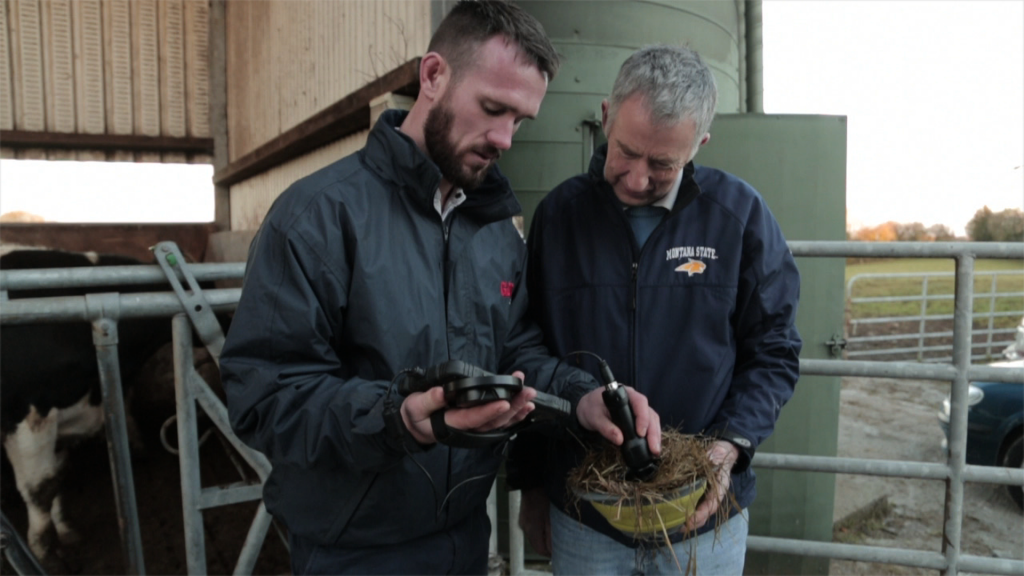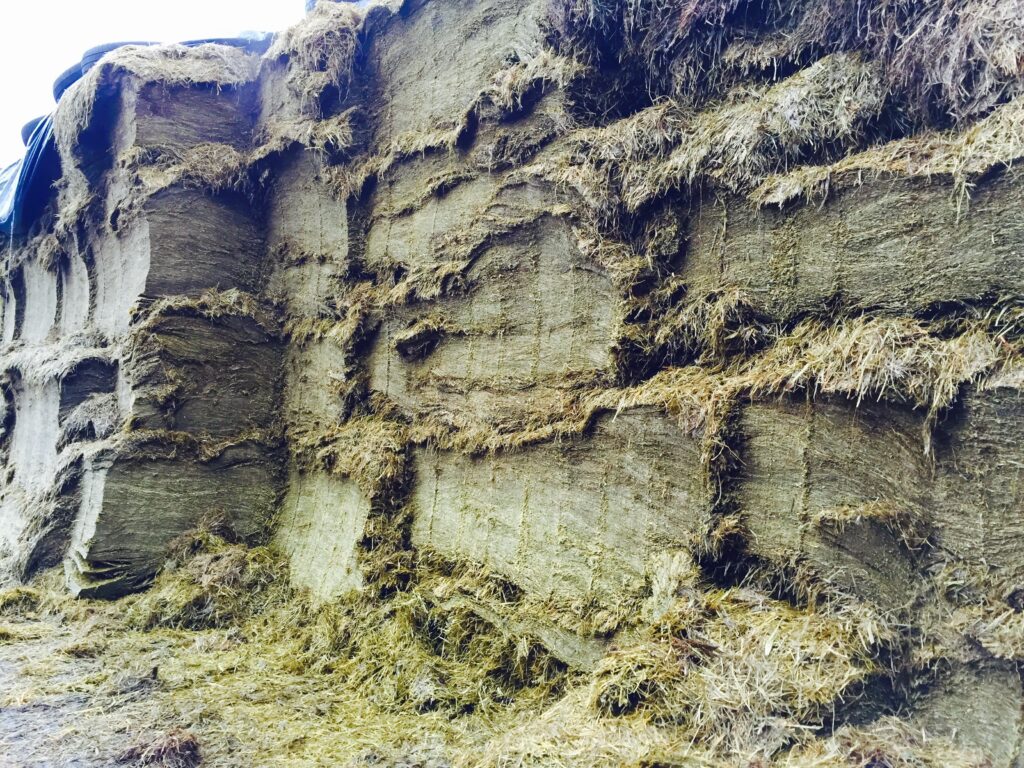It’s important to analyse silage from a quantitative and qualitative point of view, Ross Brady, Beef Specialist with GAIN Feeds has advised farmers.
When finishing cattle this winter, the Beef Specialist has some important advice for farmers:
The results of a silage analysis will give you an idea of the quality of the silage and what’s required to balance the diet to ensure sufficient performance levels are achieved.
Having a clear view of the quantity of the silage will make sure you don’t run short over the winter.
Dry Matter Digestibility (DMD) is an important measure of the energy an animal can get from the silage.
DMD will affect intake, as silage with a high DMD will be digested quicker, allowing more intake and high DMD values generally give high energy and protein levels.
The importance of balancing diets
Depending on whatever system you run it’s very important to balance the diet adequately.
A compound feed may suit one farmer and a coarse ration may suit another to adequately balance their silage.
On the other hand, if a farmer is growing fodder beet or treating barley they may require a balancer blend or straights.
It’s important to keep things simple as you don’t want to spend your entire day feeding cattle.
In some cases putting all the smaller ingredients and minerals into a balancer blend might make the most sense.
Using the Rumenade diet calculator, which was developed by Techna in France, all GAIN Feeds business managers can formulate the best diet to optimise returns for your individual system.
Performance matters
The performance difference between a well-balanced bull finishing diet and a poorly balanced one can be 0.5kg/day and €192/head (during the finishing period) when bringing them from 500 to 700kg.
When finishing steers on silage and concentrate, the performance drop per 1% DMD drop in silage quality increases the cost per kg of carcass by almost 7c.
Using Feed Additives
On beef finisher diets, the need for improved feed efficiency cannot be overstated.
While we have the capability to promote intakes in beef finishing diets, it is more important to improve the use of the existing diet, as there is a diet cost to increase intake.
For this reason, GAIN Feeds has been using Carneo, an essential oil product from Techna to increase the feed conversion ratio.
Carneo stimulates the ruminal flora and directs the Volitlie Fatty Acid (VFA) fermentation towards the production of propionic acid – an important energy source for ruminant animals such as beef cattle.
This is especially favourable for muscle development and ensuring a better energy efficiency, while Carneo also has an action to buffer rumen pH.
NIR Silage Scanners
GAIN Feeds Business Managers are now using NIR4 Farm scanners which will give an on the spot result for their customers for key parameters for forages such as Grass and Maize Silage and other wet forages including grazed grass.
These forage analysis results are used to formulate the optimal overall feeding programme for any group of livestock on farm.
Cormac Kelly, who is a beef farmer from Tubber in Co. Offaly, gives some insights into his plans for feeding cattle this winter and highlights the importance of silage and soil analysis.
For more information please contact your local GAIN business manager or visit www.gainfeeds.com.
A farmer’s view




